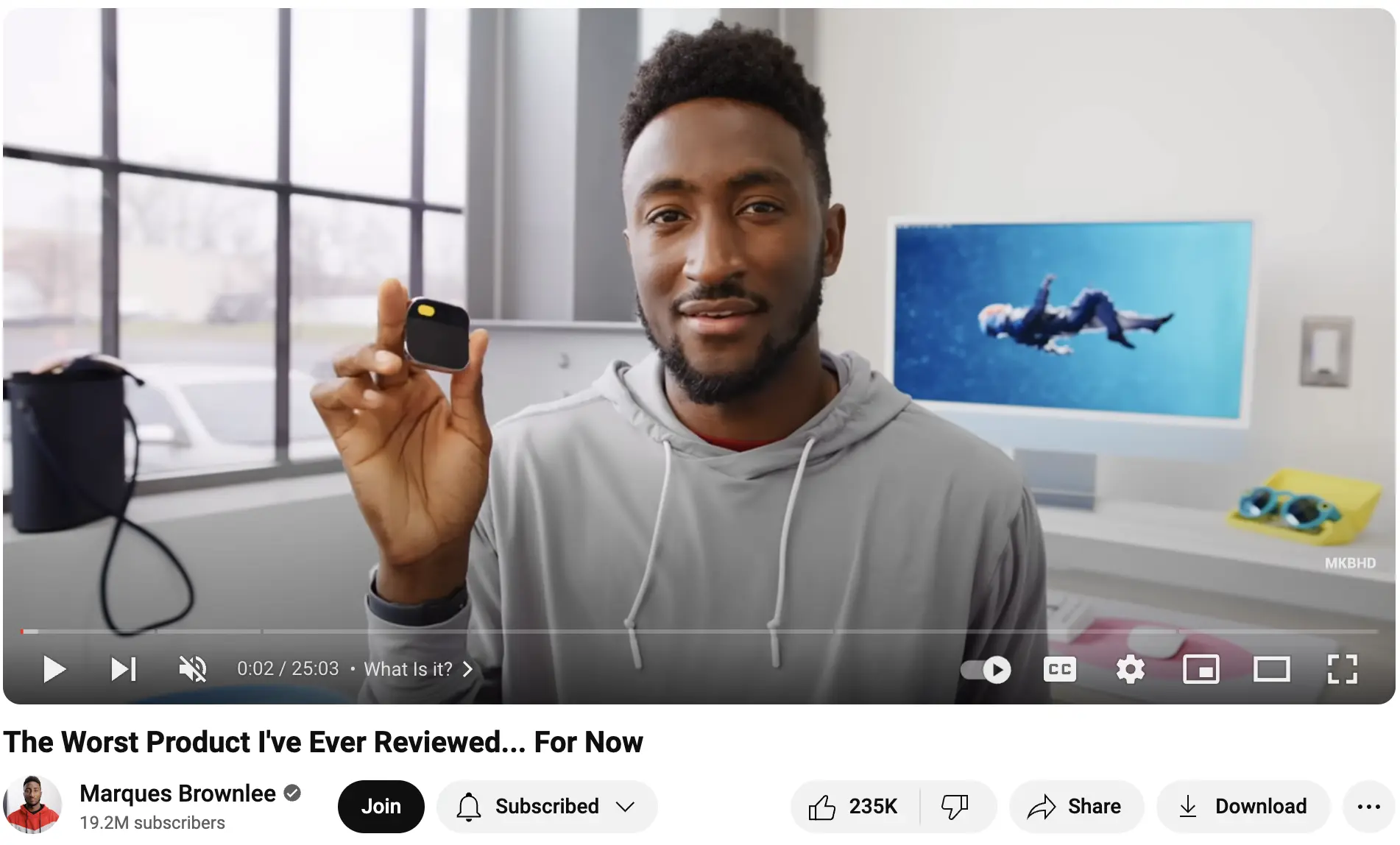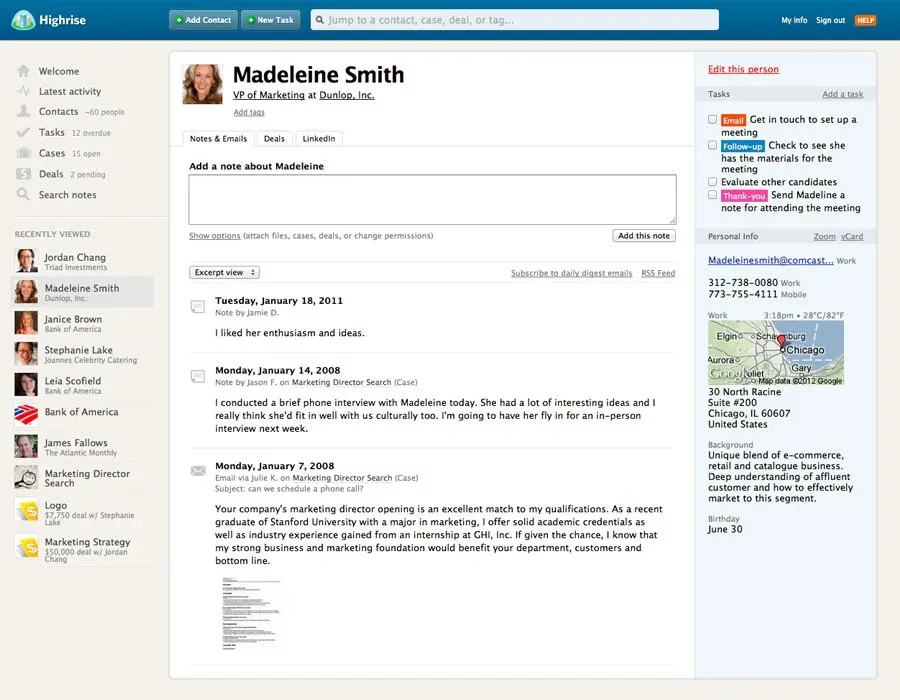“Listen to your users” is great advice until it isn’t. Talking to users prevents you from building things nobody wants. But it can also cause you to abandon your product vision and build a bloated, aimless product.
If you put product vision above user feedback, you build the Humane pin. Put user feedback above everything, you become a feature factory.

That’s because most customers focus on immediate, surface-level needs. They ask for features that solve day-to-day problems because they don’t know (or care about) your broader product vision or long-term strategy.
To give you an example: Imagine you have a vision of building a next-gen, AI-powered CRM. Big, ambitious features fill your roadmap. But your users are requesting dark mode, custom fonts and the ability to add their zodiac sign to their profile.
If you keep reacting to these requests, you’ll not only litter your interface with features mostly built for one customer, you’ll also neglect the bigger projects on your roadmap - the ones that advance your product vision.
In this article, we’ll explore when to ignore your users and when to listen to them so that you can balance your vision against your users’ input.
The “Listen to your customers” mantra
Paul Graham doesn’t miss a chance to tell you to talk to users. In "How to Start a Startup," he says, “The only way to make something customers want is to get a prototype in front of them and refine it based on their reactions.”
This is great advice - with a caveat. You need to know:
- Which users to listen to: If you build something for a user, you’ll attract more users like them.
- How it fits into your vision: It’s easy to appease a customer, but don’t compromise your principles.
- How many resources you have: If you’re a startup, you have limited resources. This makes prioritization extra important.
If you act on every suggestion, your product becomes unfocused: If you’ve ever used a product built to kind-of serve everyone (but not really serve anyone), you know what I mean.
A good example of this is Slack: April Underwood, Slack's former Chief Product Officer, has emphasized their focus on keeping the interface clean and intuitive and focused on communication. Slack never tried to expand their product to win adjacent workstreams - they just wanted to be the hub for all communication.
Directionally correct, opinionated execution
Your users know their pain points, but you need to decide how to solve them so it aligns with your vision.
Listen to the why, but be opinionated about the what. This approach allows you to build solutions that fit your product vision.
How to actually listen to your users
Listening to users is hard: The surface-level issues often obscure the deeper struggles.
Imagine users repeatedly ask for an "export to PDF'' feature. The surface-level feedback requests a feature. But a deeper dive might reveal users are frustrated with data portability/visualization.
A great way to do that is with a Command AI survey. Want to see one in action?
How to solve your users’ real problems
It’s important to retain your product’s integrity and build solutions that solve the underlying problem.
Instead of a straightforward PDF export, you might build an API/webhook or native integrations with data providers.
These kinds of features create interoperability, which sets your product up for long-term success. It also obviates future issues around data portability.
If you had built PDF export, it would’ve been a one-time expense of resources. Okay, let’s generalize from this example.
Here’s are a few steps to nail this:
- Prioritization: Assess how the new features align with your product roadmap. Is this the right time? Does it serve a long-term purpose, or is it merely a reaction to a temporary demand?
- Design and development: Design these features to enhance, not complicate, the user experience. The goal is to integrate new functionalities so seamlessly that users can’t imagine your product without them.
- Beta testing and iteration: Roll out the new features in a controlled environment first. Collect detailed feedback, watch how it integrates with existing workflows, and iterate based on real user experiences.
Getting this phase right ensures that your product not only meets user needs but also stays true to your vision, making your product more cohesive and successful in the long run. If you plan to send it by email, you can convert your PDF to link afterward to save space on attachments.
Here’s what that looks like in practice
Let’s look at some examples of companies ignoring their user feedback to advance their product strategy.
The story behind Basecamp
Basecamp’s history is a stark example letting your product vision reign supreme and being rewarded.

In 2014, 37signals, now known as Basecamp, discontinued successful products like Highrise and Campfire to focus on its flagship product, Basecamp. Customers hated the shutdown, but the company could focus on their product vision - delivering the best possible project management tool.
This is a habit at Basecamp: The team around David Heinemeier Hanson and Jason Fried has avoided feature bloat despite customer requests for advanced features like Gantt charts and complex integrations.
This focus has paid off in terms of user adoption and satisfaction. Basecamp has grown to serve over 75,000 organizations globally, spanning a wide range of industries including marketing, advertising, software development, and non-profits. By 2021, Basecamp reported having over 3.5 million registered accounts, indicating a significant user base expansion since its early days.
Brex’s startup focus
Brex is a fintech company that does banking, expenses, credit cards and overall finance. They started out serving founders from abroad (as we detail here), but soon expanded to startups and eventually to SMBs.

A few years later, Brex decided to offboard its SMB customers to focus on startups. These were happy, paying customers of Brex, but Brex wanted to focus on enterprises and VC-funded startups (read: Companies with money)
They could’ve listened to the SMBs and built features that served them - but it ultimately wouldn’t have advanced Brex’s vision of helping tech startups succeed.
Apple and the headphone jack removal
In 2016 Apple decided to remove the headphone jack from the iPhone 7. Customers hated the need to buy adapters and the high cost of the wireless headphones (I’m still traumatized). Apple stuck to their guns — and AirPods became a giant success.
This decision has eventually set an industry trend. Many smartphone manufacturers followed, removing audio outputs and launching their own wireless headphones.
Conclusion
To sum it all up - balancing your product vision with customer feedback is an art that can really influence the success of your startup. One can’t argue that customer insights are invaluable, but they should definitely not overshadow the core vision that makes your product unique.
It's all about finding that sweet spot where user needs and visionary ideas come together to create a product that not only addresses immediate problems but also sets the stage for future innovations.
Take inspiration from companies like Basecamp, Brex, and Apple, which have mastered this balancing act. These companies have shown that you can build visionary, user-centric products by combining user insights with a strong, clear vision. Even if sometimes you hate them for it.

















